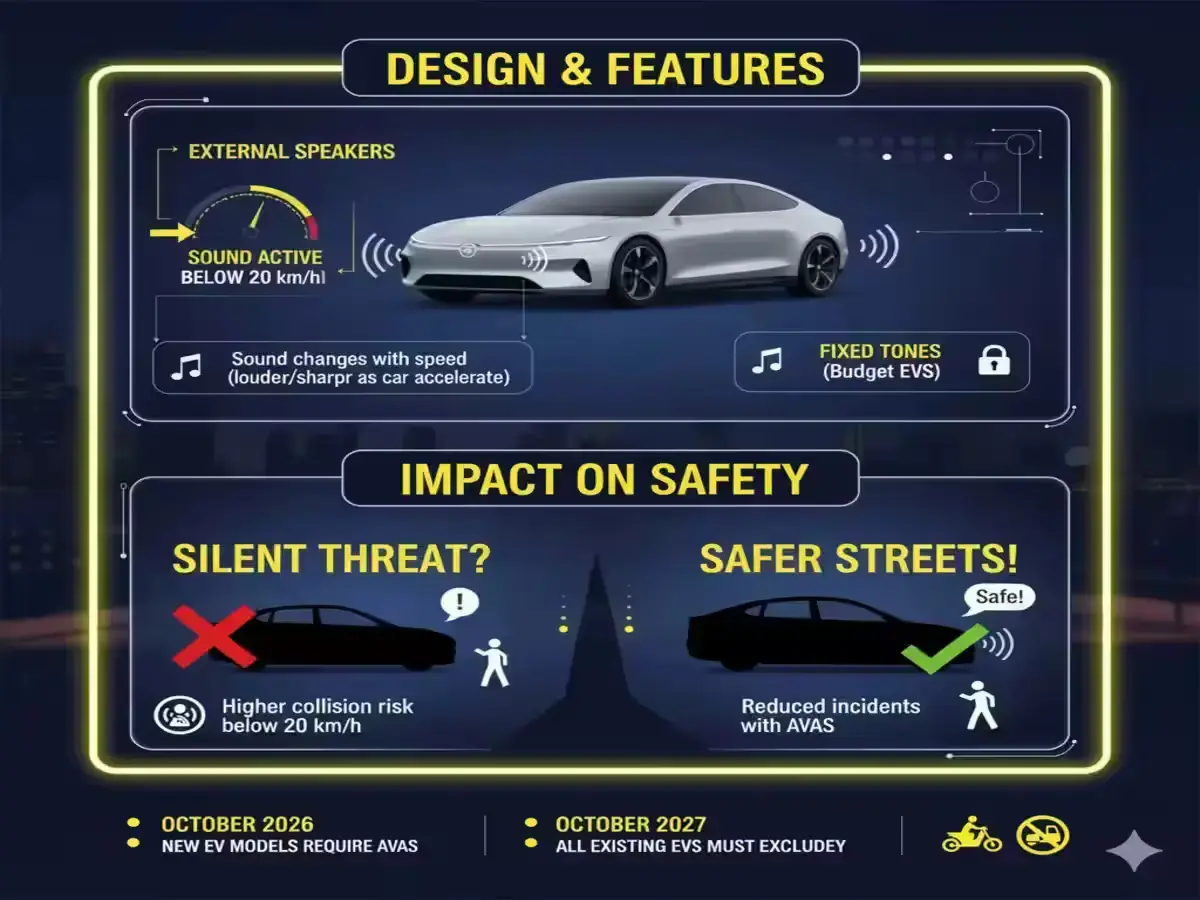Acoustic Alert System for EVs: India’s Next Move
October 2025 brings a new step for electric vehicles in India. The government has outlined plans to make acoustic alert systems in EVs — also called acoustic-vehicle-alerting-systems (AVAS) — a standard feature. The move comes as part of efforts to improve road safety for pedestrians, cyclists, and other vulnerable road users.
What Is an Acoustic Alert System?
Unlike traditional cars, electric vehicles are quiet at low speeds. While this is pleasant for drivers, it creates risks for people who rely on sound cues to sense approaching traffic. An acoustic alert system adds an artificial sound below 20 km/h and during reversing, making EVs easier to detect without being intrusive.
Design & Features

Impact on Safety
Studies show that low-speed EV collisions with pedestrians are more common because of the lack of sound. With AVAS in place, India aims to reduce such incidents. From October 2026, new passenger and goods EVs must include it, and by October 2027 all existing models must comply. Two- and three-wheelers are currently excluded.
EV Range & Cost
Review & Outlook
Drivers will barely notice the system once installed, but pedestrians and cyclists will. That’s its value — it works quietly in the background. With India plans mandatory-acoustic vehicle alerting system in all electric vehicles by 2027, the country is aligning with global EV safety practices. It’s a change that could redefine how future EVs are designed and experienced.
Frequently Asked Questions
What is an acoustic alert system for EVs?
It’s a safety system that emits sound when an EV moves slowly or reverses, so pedestrians can hear it approaching.
When will AVAS become mandatory in India?
From October 1, 2026 for new models, and from October 1, 2027 for all existing EVs in passenger and goods categories.
Will it affect EV mileage?
No. The system uses very little energy, so range impact is negligible.
Are two-wheelers included in the rule?
No, current plans exclude electric two- and three-wheelers from the AVAS mandate.